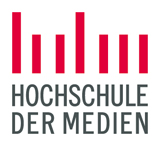| Zuletzt geändert: | 12.12.2024 / Özkan |
| EDV-Nr: | 119652a |
| Studiengänge: |
Mobile Medien (Bachelor, 7 Semester), Prüfungsleistung im Modul 3D Experience Design
in Semester
4 6 7
Häufigkeit: S25
|
|
Dozent:
|
Marion Cappellen
|
|
Sprache:
|
Deutsch
|
|
Art:
|
-
|
|
Umfang:
|
4 SWS
|
|
ECTS-Punkte:
|
6
|
|
Workload:
|
• Total hours: 180
• Contact hours: 60
• Self-study: 120
|
|
Inhaltliche Verbindung zu anderen Lehrveranstaltungen im Modul:
|
As this course is part of the English-language Minors program in collaboration with the Audiovisual Media program, students are required to apply for participation. An application form will be provided in advance. This course also includes a three-day excursion with a minimal participation fee. It is recommended to take this course concurrently with the following courses from the Audiovisual Media program to maximize learning outcomes.
|
|
Prüfungsform:
|
|
|
Beschreibung:
|
Phase One: Excursion to Nonnenhorn (March 20-23, 2025)
Students will participate in a field trip to Nonnenhorn for kick-off lectures and workshops. The excursion sets the stage for concept exploration through team-based activities and initial research. Participation is compulsory, and costs will be partly reimbursed.
Phase Two: Concept and Layout Development (March 28-29, 2025)
Students will define the type of space based on a selected theme (e.g., coming out, love declaration, childhood memory, pain). Key tasks include establishing the size, color schemes, materials, and lighting. Initial zoning plans, circulation layouts, and preliminary model tests will be developed.
Phase Three: 3D Production (April 4-5, 2025)
In this phase, students will advance their concepts using the 3D modeling software SketchUp. This phase involves deeper exploration of form, light, and shadow, and the incorporation of furniture to reflect the narrative structure and thematic points.
Phase Four: Final Model Production and Export (April 11-12, 2025)
Students will create a final architectural model using selected materials, colors, and furnishings. The module culminates with a video documentation of the design and the export of the model.
Phase Five: Evaluation
A final evaluation will assess the projects based on design coherence, thematic relevance, technical execution, and presentation quality.
|
|
English Abstract:
|
This course is part of the English-language Minors program in Experimental Film & Mixed Reality, offered in collaboration with the Audiovisual Media program. Due to its interdisciplinary nature and the inclusion of a three-day excursion, limited spots are available for each study path. Interested students are required to apply. Information and the application link will be sent via email at the end of February.
The course kick-off, including details about the excursion, will take place on March 17 at 17:00 in Room 148. A highlight of this course is the three-day excursion from March 20 to March 23, which requires a minimal participation fee.
To enhance the learning experience, we recommend concurrently enrolling in the following complementary courses from the Audiovisual Media and Mobile Media programs:
Audiovisual Media:
Creativity and Media (EDV: 221143)
Screen Design (Motion Graphics in After Effects) (EDV: 221201)
Mobile Media:
Mixed Reality Design (EDV: 119651)
This course will be delivered in block sessions on the following dates:
March 20–23
March 28–29
April 4–5
April 11–12
Content:
The module “3D Experience Design” introduces students to the creation of immersive spatial experiences using digital and physical models. Students will work through different project phases, starting with concept development and ending with the production of a virtual reality (VR) representation of their designed spaces. By combining traditional design methods with digital tools, the module provides a comprehensive understanding of 3D space creation, emphasizing the role of spatial storytelling in enhancing user engagement.
|
|
Literatur:
|
Ching, F. D. K. (2015). Architecture: Form, Space, and Order. Wiley.
Pallasmaa, J. (2005). The Eyes of the Skin: Architecture and the Senses. Wiley.
Zumthor, P. (2010). Thinking Architecture. Birkhäuser.
Ando T. & Pare R. (1996) 'Tadao Ando : The Colours of Light'
Weitere Literatur finden Sie in der HdM-Bibliothek.
|
|
Internet:
|
https://www.sketchup.com/en
|
